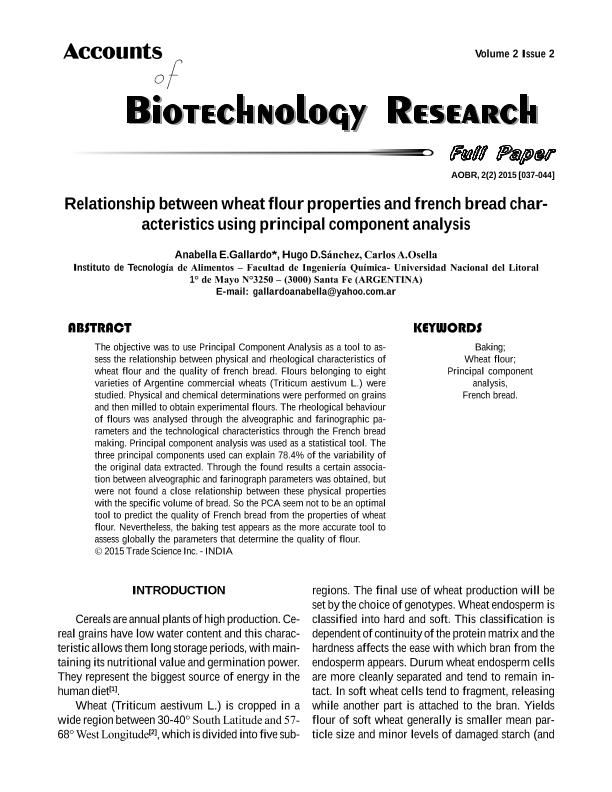Artículo
Relationship between wheat flour properties and french bread char- acteristics using principal component analysis
Fecha de publicación:
04/2015
Editorial:
Research Journal Biotechnology
Revista:
Research Journal Of Biotechnology
ISSN:
0973-6263
Idioma:
Inglés
Tipo de recurso:
Artículo publicado
Clasificación temática:
Resumen
The objective was to use Principal Component Analysis as a tool to assess the relationship between physical and rheological characteristics of wheat flour and the quality of french bread. Flours belonging to eight varieties of Argentine commercial wheats (Triticum aestivum L.) were studied. Physical and chemical determinations were performed on grains and then milled to obtain experimental flours. The rheological behaviour of flours was analysed through the alveographic and farinographic parameters and the technological characteristics through the French bread making. Principal component analysis was used as a statistical tool. The three principal components used can explain 78.4% of the variability of the original data extracted. Through the found results a certain association between alveographic and farinograph parameters was obtained, but were not found a close relationship between these physical properties with the specific volume of bread. So the PCA seem not to be an optimal tool to predict the quality of French bread from the properties of wheat flour. Nevertheless, the baking test appears as the more accurate tool to assess globally the parameters that determine the quality of flour.
Palabras clave:
Baking
,
Wheat Flour
,
Principal Component Analysis
,
French Bread
Archivos asociados
Licencia
Identificadores
Colecciones
Articulos(CCT - SANTA FE)
Articulos de CTRO.CIENTIFICO TECNOL.CONICET - SANTA FE
Articulos de CTRO.CIENTIFICO TECNOL.CONICET - SANTA FE
Citación
Gallardo, Anabella Elisabet; Sanchez, Hugo Diego; Osella, Carlos Alberto; Relationship between wheat flour properties and french bread char- acteristics using principal component analysis; Research Journal Biotechnology; Research Journal Of Biotechnology; 2; 2; 4-2015; 37-44
Compartir




